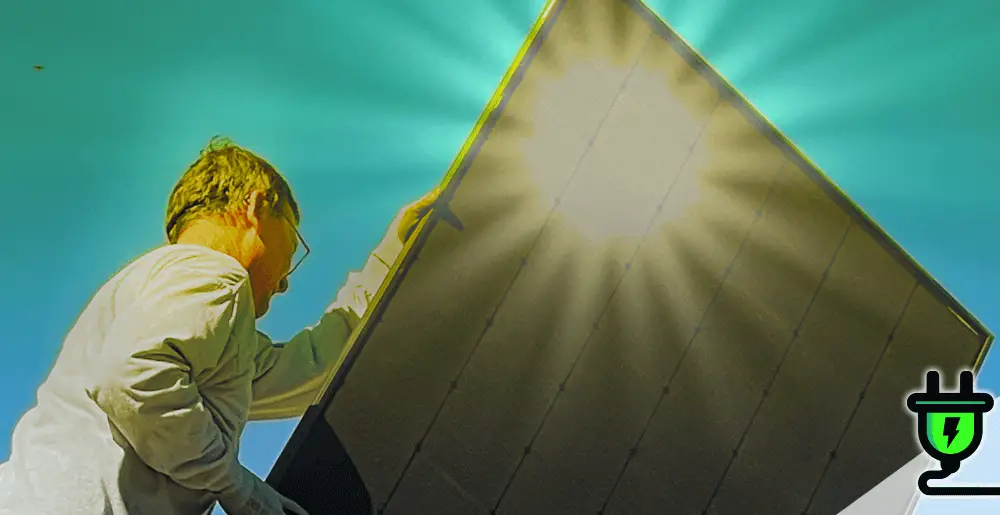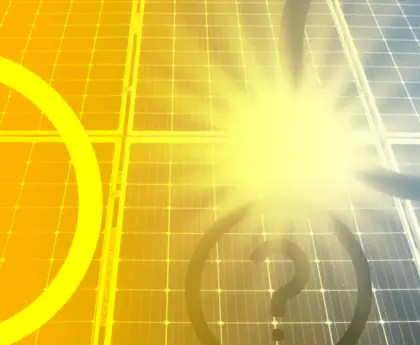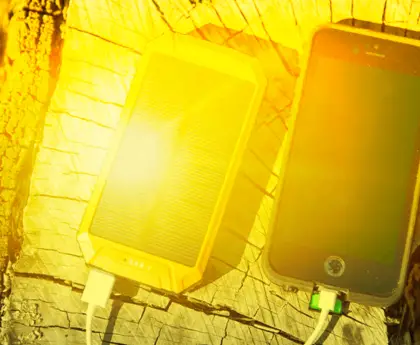A common question many homeowners ask when considering solar power is, how long does it take to install solar panels? Surprisingly, the actual installation usually only requires between one to three days.
Typically, installing a solar panel system to a house or office building takes about 4 to 6 hours. This duration varies with the size of the system being installed.
The complete procedure for setting up solar panels and attaining approval does not happen instantly. The journey from initially signing the contract to finally going solar roughly spans around 45 days.
Truth is, a significant portion of this wait time is obtaining necessary permits and the time taken by the utility company to process your solar billing application.
This article will provide you with a comprehensive breakdown of the solar panel installation process and the factors that can affect this timeline.
Ready to shine a light on your solar questions? Let’s get started!
Factors Affecting Solar Panel Installation Timeline
Factors such as supply chain issues, local permitting and inspection processes, the size and type of solar panel system, property characteristics, necessary upgrades, and the utility company’s interconnection process can all impact the timeline for installing solar panels.
Supply chain issues and personal research
Supply chain issues can sometimes cause delays in the solar panel installation process. This could be due to a shortage of equipment or materials needed for the installation. It’s important to work with a reputable installer that has reliable supply chains to minimize any potential disruptions.
Additionally, personal research plays a crucial role in the timeline of solar panel installation. Before making a decision, homeowners typically spend time researching different installers, comparing prices, and evaluating their options.
The amount of time spent on personal research can vary from person to person, but it is an essential step in ensuring a smooth and successful installation process.
Local permitting and inspection process
The local permitting and inspection process is an important step in installing solar panels. After obtaining the necessary permits and approvals from your local government or municipality, a city inspector will visit your property to ensure that the installation meets all safety regulations and building codes.
This inspection typically takes place after the solar panels have been installed but before they are connected to the utility grid. The purpose of this inspection is to verify that the system is properly installed, wired correctly, and can safely generate electricity.
Once the inspector gives their approval, you can proceed with connecting your solar panels to the grid and start enjoying clean, renewable energy from the sun.
Size and type of solar panel system
The size and type of solar panel system you choose can have an impact on the installation timeline. Larger systems may require more time for installation, as there are more panels to mount and connect.
Additionally, certain types of solar panel systems, such as ground-mounted or off-grid systems, may require additional preparation work before installation can begin. It’s important to discuss your specific needs and preferences with a qualified installer to determine the best size and type of system for your home or business.
Property characteristics and necessary upgrades
Installing solar panels on a property requires considering the characteristics of the property and determining if any necessary upgrades are needed. Factors such as roof size, orientation, and shading can impact the installation process.
Additionally, it is important to assess the condition of the electrical system to ensure it can handle the additional load from solar panels. In some cases, upgrades to wiring or electrical panels may be required before installation can proceed smoothly.
Utility company and interconnection process
The utility company and interconnection process is a crucial step in solar panel installation. Once the panels are installed, they need to be connected to the grid so that they can start generating electricity.
This requires working closely with the local utility company to ensure a smooth and efficient interconnection process. The utility company will inspect the system and make sure it meets all safety standards before allowing it to be connected to the grid.
This step can take anywhere from a few weeks to a couple of months, depending on the specific requirements of your area and the workload of the utility company. It’s important to work closely with your installer during this process to ensure that everything goes smoothly and that your solar panels can start generating clean energy as soon as possible.
The Solar Panel Installation Process
Choosing a solar installer, conducting a site assessment, obtaining permits and approvals, ordering equipment, scheduling installation, and completing the actual installation process are key steps in installing solar panels.
Choosing a solar installer
Efficiency and safety in solar panel installation begin with finding the right installer. A team of skilled in-house installers, illustrated by fact number 2, tends to handle this process which usually spans one to three days.
The importance of choosing a qualified installer is highlighted by the significant time investment involved in a solar project. These projects can range from two to six months before reaching completion, as stated in fact number 3.
This underscores the need for an experienced installer who can manage potential complexities over such long timelines effectively. Additionally, expertise comes into play during the actual installation phase typically completed within four to six hours depending on system size according to fact number 4.
Hence, it’s wise to select your solar installer carefully while ensuring their credibility, experience level and customer satisfaction rate align with your expectations.
Site assessment and system design
During the solar panel installation process, a crucial step is conducting a site assessment and system design. This involves evaluating your property’s characteristics to determine the best location for the panels and analyzing your energy needs.
An experienced installer will assess factors such as roof orientation, shading, and structural integrity to optimize the performance of your solar system. Additionally, they will consider local regulations and utility interconnection requirements to ensure compliance.
This detailed evaluation enables them to design a customized solar panel system that maximizes energy production and meets your specific needs.
Obtaining permits and approvals
To install solar panels, you will need to obtain permits and approvals from the local authorities. This process involves submitting applications, providing necessary documentation, and paying any required fees.
The timeframe for obtaining these permits can vary depending on your location and the complexity of the project. It is important to factor in this step when planning your solar panel installation timeline.
Ordering equipment and scheduling installation
Solar panel installation involves several important steps, one of which is ordering the necessary equipment and scheduling the installation. Once you have chosen a solar installer and gone through the site assessment and system design process, it’s time to order the equipment needed for your specific project.
This includes solar panels, inverters, mounting hardware, wiring, and other components. The ordering process typically takes a few days to weeks depending on availability and supplier lead times.
After the equipment has been ordered, your solar installer will work with you to schedule a convenient date for installation. It’s important to note that installation schedules can vary based on factors such as weather conditions and installer availability.
Actual installation process
The actual installation process of solar panels is typically completed by a skilled team of in-house installers. This phase can take about 4-6 hours, depending on the size of the system.
Once the solar panels are installed and connected to the grid, they can start generating electricity immediately. Each step of the installation process has its own timeframe, but most companies can complete a residential rooftop system installation within one to three days.
Overall, it takes an average of two days or more from start to finish for the entire installation process.
City inspection and utility interconnection
Once the solar panels are installed, the next step is to have a city inspection and complete the utility interconnection process. During the city inspection, an inspector will visit your property to ensure that all installation requirements and building codes have been met.
This step is important to ensure both safety and compliance with local regulations. Once the inspection is passed, you can proceed with the utility interconnection process. This involves connecting your solar panel system to the electric grid so that you can start generating electricity and potentially earn credits for any excess energy produced.
It’s worth noting that this step may require additional paperwork and coordination with your utility company, but once completed, you’ll be able to enjoy the benefits of solar power in your home or business.
In summary, after installing solar panels on your property, it is essential to undergo a city inspection to ensure compliance with local regulations and safety standards. Once approved by the inspector, you can move forward with connecting your solar panel system to the electric grid through the utility interconnection process.
Typical Timeframe for Solar Panel Installation
The typical timeframe for solar panel installation ranges from two to six months, depending on various factors such as the size and type of the system, local permitting and inspection processes, property characteristics, necessary upgrades, and the utility company’s interconnection process.
Range of two to six months
The typical timeframe for solar panel installation can range from two to six months. This includes the entire process, from signing the contract to completion. While the actual installation itself can be completed in just a few days, there are several factors that can affect the overall timeline.
These include supply chain issues and personal research, local permitting and inspection processes, as well as property characteristics and necessary upgrades. It’s important to work with a qualified installer who can provide realistic estimates based on your specific situation.
Realistic estimates and variables
Realistic estimates for solar panel installation suggest that the process can take anywhere from 2 to 6 months, from signing the contract to completion. However, this timeframe can vary depending on several variables.
Factors such as supply chain issues, local permitting and inspection processes, the size and type of the solar panel system, necessary property upgrades, and utility company interconnection can all impact the overall installation timeline.
It is important to work with a qualified installer who can provide you with an accurate estimate based on your specific circumstances and location. Remember that while the installation itself may only take a few days, there are other steps involved in the process that contribute to the overall duration of the project.
Importance of working with a qualified installer
Working with a qualified installer is crucial when it comes to installing solar panels. A skilled team of in-house installers will ensure that the installation process is done correctly and efficiently.
They have the expertise to handle any challenges that may arise during the installation, ensuring that your system functions optimally. By choosing a qualified installer, you can have peace of mind knowing that your investment in solar panels is being handled by professionals who know what they’re doing.
FAQs: How Long Does It Take to Install Solar Panels?
Can solar panels be installed in one day? Find out the answer to this and other frequently asked questions about solar panel installation. Read more to learn everything you need to know about the time it takes to install solar panels.
Can solar panels be installed in one day?
Solar panels can typically be installed in one day. Skilled installers usually complete the installation within a few hours, depending on the size of the system. While the overall timeline for a solar panel project can range from two to six months, the actual installation process itself is often completed quickly.
Once installed and connected to the grid, solar panels can start generating electricity right away. So if you’re considering going solar, rest assured that your panels can be up and running in no time.
Do I need to inform my electricity supplier?
You will need to inform your electricity supplier when you install solar panels. This is important because it allows them to make the necessary changes and updates to your account.
By notifying your electricity supplier, they can adjust their records and billing system to account for the energy you will be generating from your solar panels. It also ensures that any excess energy produced by your system can be fed back into the grid and credited on your bill through a process called net metering.
So, remember to contact your electricity supplier once you have installed solar panels on your property.
How long does it take to install commercial solar panels?
Installing commercial solar panels typically takes longer than residential installations due to their larger size and complexity. The exact timeframe can vary depending on factors such as the size of the system, equipment availability, and local permitting processes.
On average, it may take several weeks or even months to complete the installation process for commercial solar panels. However, it’s important to work with a qualified installer who can provide a realistic estimate based on your specific project requirements.
Can I install solar panels myself?
Installing solar panels yourself is possible, but it is highly recommended to hire a professional installer. Solar panel installation requires specialized knowledge and skills to ensure proper placement, wiring, and connection to the electrical grid.
While there are DIY kits available, handling electrical components can be dangerous if not done correctly. Additionally, professional installers can navigate local regulations and obtain necessary permits more efficiently.
It’s best to work with a qualified installer who has experience in the industry to ensure a safe and successful installation process.
How Long Does It Take To Install Solar Panels FAQs
Does the Solar installation process involve any disruptions to my daily life?
Yes, during the installation process, there may be some disruptions such as temporary power outages or restricted access to certain areas of your property. However, these inconveniences are usually minimal and temporary.
What factors can affect the duration of solar panel installation?
Several factors can affect how long it takes to install solar panels, including the size of the system, complexity of the roof structure, weather conditions, and local permitting processes.
Do I need to be present during the entire installation process?
While it is not necessary for you to be present during every moment of the installation process, it is advisable to be available at key stages such as initial assessments and final inspections to ensure everything meets your expectations.
Conclusion: How Long Does It Take To Install Solar Panels?
Installing solar panels typically takes one to three days, with the actual installation process usually completed within a few days.
While the overall timeframe for a solar panel project can vary, realistic estimates suggest that it can take anywhere from two to six months from signing the contract to completion.
Working with a qualified installer is important to ensure an efficient and timely installation process.






